By Kelly Bell
During the third week in November 1899, British forces under the overall command of General Sir Redvers Buller were marching northward across South Africa’s Orange Free State in a campaign to relieve the strategically vital railroad center of Kimberley. Queen Victoria’s garrison at the pivotal location was under siege from an unexpectedly determined army of white South Africans of Dutch ancestry who were determined to preserve their traditionally independent lifestyle from subservience to the British Empire. Still in its early stages, Great Britain’s war with the truculent Afrikaners (collectively known as the Boers) was heating up rapidly as the locals violently resisted the advances of the Crown.
The field commander of the relief expedition to Kimberley was Paul Sanford, the third Baron Methuen, at 54 the youngest lieutenant general in the British Army. Educated at Eton, Methuen had joined the Scots Fusilier Guards in 1864 and later served under General Sir Garnet Wolseley in the Ashanti War and the Egyptian campaign. As the leader of a large force in the field, however, Methuen was badly out of place. He was brave and hard working, but he had little experience in actual combat and was inflexibly devoted to established dogma. Nevertheless, his predominantly Scottish command was eager to meet the impertinent Boers in a full-blown donnybrook.
To Rescue Cecil Rhodes
The relief of Kimberley had taken on an importance far beyond its military significance due to the unwelcome presence of one man: Cecil Rhodes, the richest man in the Western world. At Kimberley, Rhodes had made his first great fortune; the De Beers diamond mine controlled 90 percent of the world’s diamonds. In the ensuing decade and a half, Rhodes had also shouldered his way into controlling the fabulously wealthy gold mines in Transvaal’s Witerwatersrand region as well. Indeed, it was the subsequent gold rush into the “Rand,” as the area was known, by thousands of English and foreign prospectors that had exacerbated the deep social, racial, and political differences between the Boers and the uitlanders. A formal declaration of war by Transvaal president Paul Kruger came in October 1899.
In short order, 38,000 Boer commandos swept on horseback across the borders of the British colonies at Natal, Cape Colony, and Bechuanaland, besieging the British outposts at Ladysmith, Mafeking, and Kimberley. British response was swift. A 47,000-man relief corps commanded by Buller, one of the nation’s most decorated soldiers, steamed south, intending to land at Cape Town and sweep inexorably northward to capture the Boer capitals of Bloemfontein and Pretoria.
Rhodes’s inexplicable decision to rush to Kimberley in the first days of the war changed Buller’s battle plan before he had even arrived in South Africa. Instead of marching immediately on Pretoria, Buller was forced to divide his army into three parts. One would remain in Cape Colony to guard against further Boer attacks. The second, commanded by Buller himself, would march to relieve Ladysmith, while the third, under Methuen, would hasten to relieve Kimberley and rescue Rhodes before he did any more damage to the British war aims.
A Lackadaisical Advance
Methuen had been informed via searchlight, heliograph signals, and runners that the Commonwealth forces defending Kimberley were not only holding off their defenders, but also had 40 days’ worth of food stockpiled. He therefore advanced at a more leisurely pace toward the garrison, which was 74 miles away. This allowed additional British military elements to catch up and strengthen his column. In the process, he also fought two skirmishes with Boer commandos at Belmont and Graspan, driving off the defenders but suffering nearly 300 casualties himself, many caused by illegal dumdum bullets. Dumdums, bullets that had been hollowed out at the tip and covered with a piece of tin that exploded on impact, causing horrific wounds, had been outlawed by the Geneva Convention. The Boers claimed to have found a sizable supply of such ammunition when they captured the British garrison at Dundee, and they felt that it was only fair to return them forcefully to their former owners.
At month’s end, Methuen set up a bivouac on the banks of the Modder River and prepared to attack a body of Afrikaner troops his scouts had located nearby. Methuen’s lackadaisical advance gave the besieging Boers time to enlarge their own ranks and prepare an unorthodox defensive perimeter that would take the British completely by surprise.
Ten miles to Methuen’s right, in the town of Jacobsdal, the Boers had left their kraals (mobile encampments) virtually undefended. Their flocks, wagon trains, supplies, and accompanying noncombatants were a valuable and vulnerable target, but such an attack did not seem to occur to Methuen, who was content to wile away his days beside the Modder.
An open-minded, intelligent, and imaginative general named Jacobus Herculaas De la Rey commanded the Boer detachment facing Methuen’s men. Newly arrived from the forces encircling Kimberley, the 52-year-old De la Rey was a misleadingly benign-looking man who flew into a frenzy during combat, lashing his men with his sjambok (whip) and shouting, “Fight! God is on our side!” Brokenhearted over the death of his 19-year-old son Adriaan, nicknamed “Adaan,” who had been killed by a British shell a few days earlier when the British first reached the Modder, De la Rey was out for vengeance. “Today there slipped to death so softly in my arms our loved son Adaan,” he telegraphed his wife following the skirmish. “Tomorrow the body will be committed to earth here in Jacobsdal. How hard it still is for us all. But God has so decided.”
Methuen’s Poor Reconnaissance
Methuen had not bothered to adequately scout the Boers’ positions via reconnaissance patrols or observation balloon. “They are not here,” he said confidently to Sir Henry Colville of the Coldstream Guards upon reaching the Modder. A daylong rifle barrage had disabused him of that notion, adding another 500 casualties to the ranks, including Metheun himself, who suffered a painful, if superficial, bullet wound to the thigh. Using doubtful logic, Metheun remained convinced that his adversaries’ numbers roughly equaled his own 15,000 troops (there were actually only 8,000 defenders) and that they were waiting for him in the vicinity of a sprawling local farm called Magersfontein. In this last assumption, he was uncharacteristically—but not entirely—correct.
The subsequent 12-day hiatus between the time Methuen learned of De la Rey’s force and the start of the battle gave the Boers the opportunity to perfect their defensive plans. Ordinarily, they built defenses atop the highest available elevation in the area—huge, naturally formed rock piles scattered over the South African savannah. Called kopjes, these promontories provided convention’s ideal of defensive positions, but when De la Rey arrived, he immediately halted work on the summit and began outlining a very different plan. He set the men to work digging trenches at the kopje’s base. His troops would still have a sweeping field of fire over the broad plain sloping gently away in front of them, but their enemies would take for granted that the defenders were ensconced atop the rocks. By the time Methuen launched his conventional frontal assault, the Boers were concealed in lengthy, deep, and hard-to-see trenches extending the length of the foothill facing the wide expanse across which hordes of unsuspecting Scotsmen would nonchalantly march.
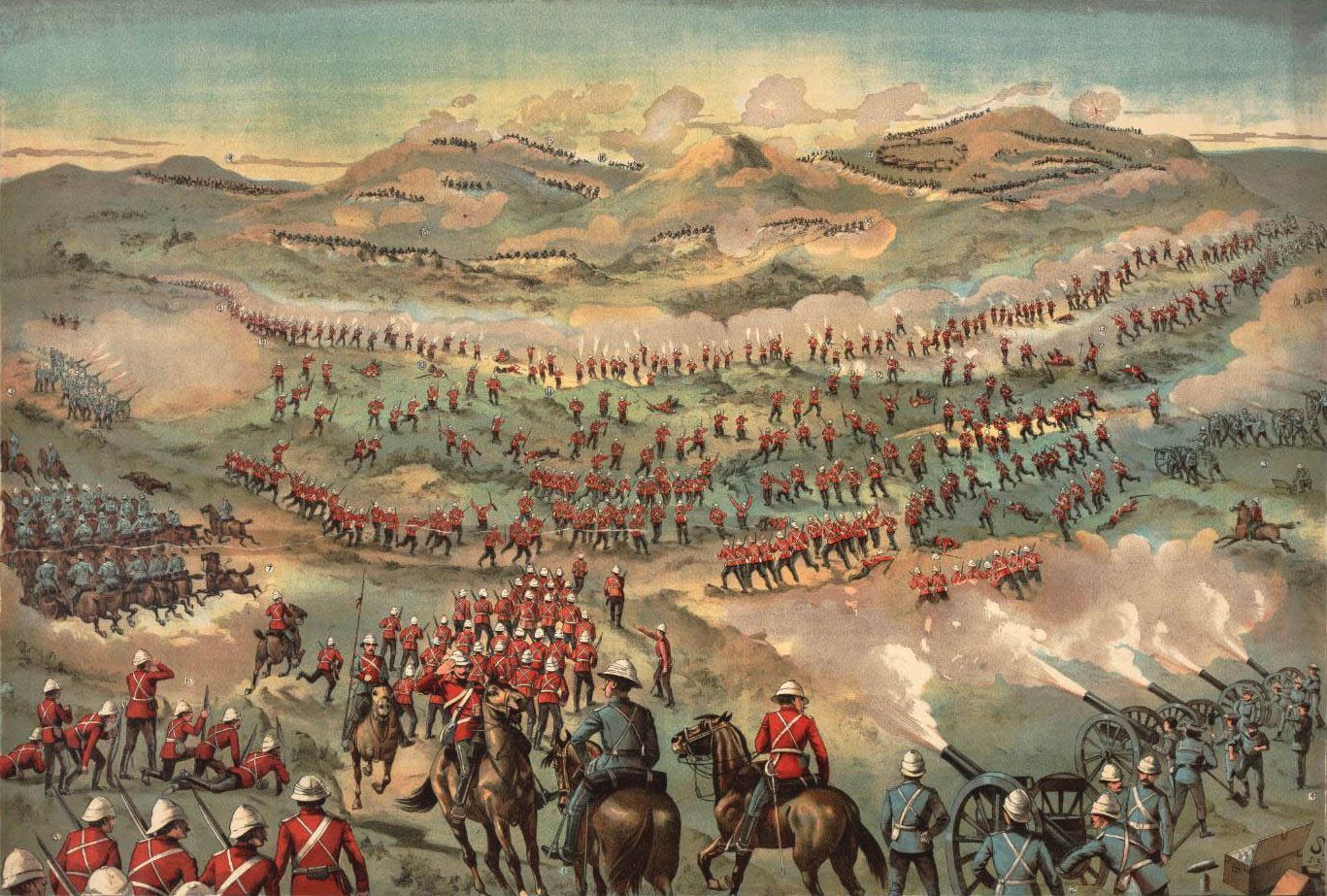
A few weeks earlier, Methuen had employed an uncomplicated tactic to rout the Boers at Belmont. He had heavily shelled the defensive lines during the night while his infantry slowly advanced under cover of darkness. At dawn his men had charged and, despite heavy losses, managed to clear the Boers from the field. At Belmont, however, Methuen had at least known the defenders’ precise location when he had his artillerymen pound it. At Magersfontein, his gunners would draw beads on the wrong target.
Thirty Guns and Four Howitzers
It was pouring rain at 3 pm on December 10 when the famed Scottish Black Watch Brigade and 9th Lancers left their bivouac, marching in perfect formation toward the stony elevation in the near distance. The Scotsmen were well rested, having arrived by train one day earlier, thus avoiding the exhausting three-week-long march along the railroad tracks toward the Modder. The brigade contained some of the most famous fighting units in the British Army: the Black Watch, the Argylls, the Seaforths, and the Highland Light Infantry. Few regiments boasted more battle honors than the Highland Light, which, contrary to its name, came not from the Scottish highlands but from the slums of Glasgow. The other regiments called them the “Glasca Keelies,” meaning Glasgow pub brawlers, a sobriquet the Highlanders wore with pride—but woe to any outsider who called them that to their face.
As soon as the Scottish infantry was in position, the army’s gunners opened a two-hour pounding of the unoccupied hilltop. Using a powerful new explosive called lyddite, the shells exploded with deafening reports, shattering boulders and shrouding the kopje’s peak with yellowish-green smoke. One observant Black Watch noncom noticed that when projectiles fell short and hit the rock pile’s base the dirt thrown up by the explosions was of a different color than that higher up the slope. “There must be trenches there,” he remarked, but his officers ignored him. It was the heaviest concentrated British bombardment since the siege of Sebastopol in the Crimean War, 45 years earlier. Twenty-nine field guns, four howitzers, and a large 4.7-inch naval gun hammered the green-gray hilltop. The naval gunners confidently assured onlookers that one shell from “Old Joe,” as their gun was nicknamed after British Foreign Minister Joseph Chamberlain, would kill anyone standing within 150 yards of impact.
Methuen was delighted with the seeming destruction being wrought by his artillery. Assuming the Boer ranks must be decimated he believed the following morning’s advance would be a stroll. He evidently saw no significance in the fact that the bombardment had not flushed any Boers from their positions. In fact, the shelling killed none of the defenders, and wounded just three. The waiting riflemen perceived to their glee the brilliance of De la Rey’s plan as they crouched untouched in their trenches and listened to the shuddering, ineffectual explosions behind and above them.
Methuen had intended to launch his observation balloon to assess the effects of the shelling, but the storm aborted this. He had no intention of waiting for the weather to clear, so with the artillery prelude concluded he ordered the Highlanders back to camp until their planned midnight advance. The Black Watch’s commander, Maj. Gen. Andrew Wauchope, was uneasy with the notion of a nocturnal march. A seasoned campaigner, he was not easily shaken, but he knew that his troops had never before fought in darkness, and he was concerned about their unfamiliarity with this form of warfare. Still, he did not bother voicing his misgivings to Methuen, who probably would not have listened anyway. Instead, Wauchope rode back to his brigade’s positions and obediently transmitted his commander’s orders.
“Red Mick” Wauchope
Affectionately called “Andy” and “Red Mick” by his soldiers, Wauchope was the only clean-shaven general officer in the bewhiskered British Army. When he started his career, his smooth visage had not been a matter of choice. Enlisting in the Royal Navy as a fresh-faced 14-year-old, he served three years before retiring for two years. At 19 he acquired a commission in the Black Watch. He would never leave.
During the 1873 Ashanti War, Wauchope was wounded twice, once critically. After recovering, he returned to active duty and was again seriously wounded in the 1882 Egyptian campaign. Recuperating in time to participate in the subsequent Nile Expedition of 1884-1885, he was grievously hurt in the Battle of Kirkeban. At this point, Wauchope’s older brother in Scotland died of natural causes, and Wauchope temporarily retired on half pay to oversee his family’s estates and business affairs. In 1892 he ran for a seat in Parliament, and when he lost he made the mortal decision to forsake his comfortable, secure life in the Highlands and return to the military.
Taking part in the 1898 Sudanese excursion, Wauchope for the only time in his life participated in a military campaign without being wounded, but it might have been better for him if he had been nicked. A year later, rather than convalescing as he usually did following a military operation, he was hale enough to be sent to South Africa.
Nighttime Advance of the Highlanders
At 11 pm, the four regiments of Scotsmen were awakened and assembled into tightly packed formations of quarter columns, forming a dense rectangle of 4,000 men in 96 carefully spaced lines. In front was the Black Watch, followed by the Seaforth and Argyll units, with the Highland Light Infantry bringing up the rear. In the eerie, rain-swept darkness they set out at midnight, illuminated by lightning, toward the Magersfontein farm owned by a fellow Scot named John Bisset.
Officers stretched ropes between the men to preserve the marching band-style formation as they approached the gray-faced hill. Before long the rain stopped; dawn was already approaching, and the craggy horizon was becoming murkily visible. Major George Elliot Benson was on point, and he twice suggested that it was time to deploy. “This is as far as it is safe to go, sir, in mass,” he cautioned. But Wauchope wanted to get as near to the enemy as possible by shooting light. When he finally decided to go into extended order (five paces between men), the front of the formation blundered into a briar patch, and Wauchope elected to stay bunched up until clear of the brush. By the time the back of the column stumbled out of the bushes, the lead elements were within 700 yards of the kopje, and although they did not yet know it, they were within 400 yards of the bristling Boer trenches. If nothing else, the delay in deploying meant that Wauchope’s worries about how his men would perform in night combat were rendered pointless. Now it was daylight.
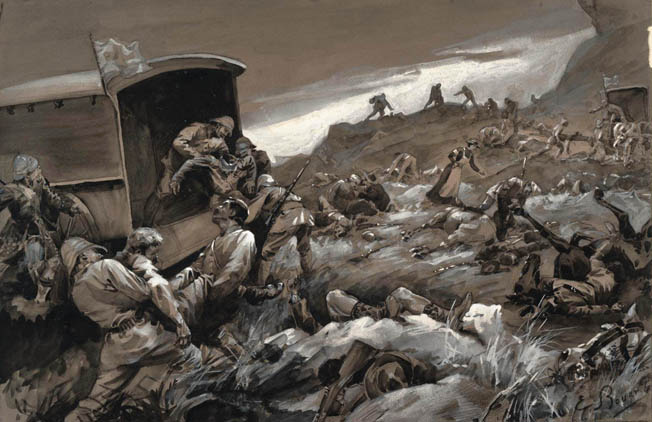
Rumors would later circulate that the defenders were tipped off by lantern signals from darkened farmhouse windows, or that the Afrikaners were warned of the advance by spies or traitors, but it is unlikely the defenders needed anything more than the previous afternoon’s ineffectual barrage to alert them. As Wauchope was giving his men the order to position themselves for battle, the defiant white tribesmen, who had anticipated a conventional dawn assault, opened fire. Well-funded by profits from gold and diamond mines, the Boers had purchased the most up-to-date armaments, mainly Mauser rifles and Krupp field pieces from weapons merchants in German-ruled Tanganyika.
As Mauser bullets poured into the thick mass of astonished Scotsmen, Wauchope recklessly stepped closer to the trenches to see how far they extended. Amazingly, he was not hit, and he sent his cousin, Lieutenant Arthur Wauchope, off to find Lt. Col. John Coode of the Black Watch and tell him to move his soldiers to the right, where the defensive gunfire seemed less intense. Coode was shot dead before he could act on these orders, as was the Argyll commanding officer, Lt. Col. Gerald Goff. When Lieutenant Wauchope made his way back to where he had left his cousin, he found him dead as well, shot down within 200 yards of the Boer trenches, his trusty claymore fighting sword by his side. Minutes later, Arthur Wauchope was himself mortally wounded in both legs.
“We were Getting Shot Like Sheep”
A sergeant named McInnes later recalled that “the brigade seemed to stagger under the awful fire, but yet held their ground and did not break. The order was given to lie down, but in that close formation we were getting shot like sheep. I remember distinctly the 91st [Argylls] getting the order to move to the right, and we started moving in that direction when several contradictory orders rang out, some calling to ‘Fix bayonets and charge!,’ etc. Then the Black Watch, who were in front, could stand it no longer and were driven back on the Seaforths, who likewise started to shout, ‘Retire!’ and the next minute the brigade had lost all shape and were converted into a dismayed mob, running to seek cover anywhere and getting shot by the score as they did so.”
Thousands of kilted Highlanders turned and galloped back the way they had come, hounded by a blizzard of well-aimed bullets from a foe that had already figured out 20th-century warfare. Honed by centuries of picking off hostile tribesmen and an assortment of the most dangerous wild animals on Earth, the Boers’ aim was deadly. Still, not all of the attackers panicked. Several pipers struck up “The Campbells Are Coming,” the traditional Scottish fight song, heartening the Scots enough that Corporal John Shaul was able to rally a group and charge. Although his advance soon faltered, Shaul’s courage earned him a Victoria Cross. Black Watch Adjutant William McFarlan led a detachment up the southeastern slope. British artillery again opened fire on the wrong sector, however, forcing McFarlan’s unit to retreat.
Missed Opportunity on the Boer Rear
Braving the merciless marksmanship of the defenders (which only improved as the sun rose higher), Seaforth Lieutenant Robert Wilson stumbled onto a splendid opportunity to turn the course of battle and bring the war to a quicker conclusion. Wilson chanced into a gap in the Boer defenses and guided several hundred Scots through it and into the unguarded enemy rear. He and his men frantically set out for the kopje’s peak, from where they could have unleashed a lethal plunging fire into the trenches from behind, silencing the Mausers and enabling the pinned-down Highlanders to charge, catch the Afrikaners in a crossfire, and carry the day.
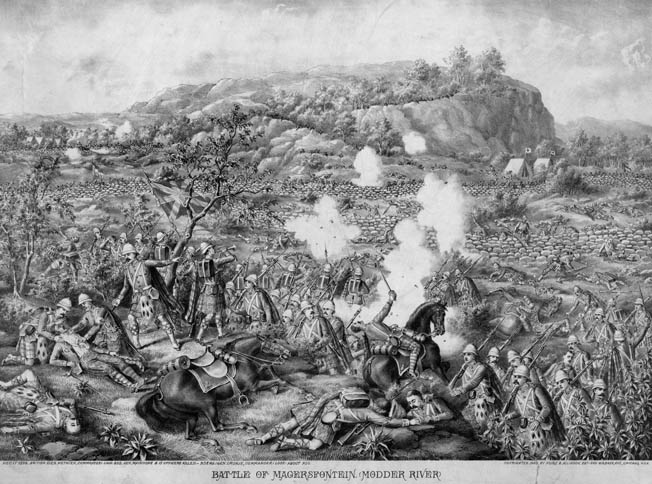
Fate dictated otherwise. South African General Pieter Cronje had spent an uncomfortable, sleepless night in the soggy emplacements. Before the shooting started, he and six of his officers had set out on an inspection tour, quickly becoming lost in the darkness. They were still wandering on the rocky hillside when Wilson’s troops suddenly appeared. Spying the Highlanders, Cronje dove behind a boulder and cried, “Schiet, kerels! Schiet! (Shoot, boys! Shoot!)”
The seven Boers leveled their rifles and squeezed off rounds as fast as they could. Had Wilson ordered a charge, he easily could have overwhelmed this handful of assailants and captured or killed the Afrikaner general, but Cronje’s little band made so much racket that Wilson thought considerably more than seven men were facing him. He and his men fell flat and commenced returning fire from a stationary position, the gunfire alerting the main body of defenders that something was afoot behind them. Boers hurried to close the hole in their flank and block the path of the Black Watch and Seaforth troops who were rushing to join Wilson. The quick-thinking Boers surrounded Wilson’s unit. The cut-off Scots were decimated; in the end, three dozen survived to surrender.
Methuen’s Order to Hold
The storm-lashed night yielded to a cloudless, sweltering December day that quickly parched the surviving Scotsmen prone on the featureless battlefield. They had taken the precaution of wearing khaki aprons over their brightly colored kilts, but their dark tartans stood out starkly against the sun-withered African veldt and made all-too-conspicuous targets. All morning, isolated units tried with costly gallantry to storm the death-spewing positions in front of them. One group got to within 150 yards of the trenches before concentrated volleys forced them back onto the hard ground.
At 11 am, the 1st Gordon Regiment was drawn from reserve and hurriedly sent to the kopje. Pounding through their prone predecessors, they got to within 150 yards of the enemy defenses before they, too, were forced flat by the pitiless sleet of lead that flamed toward them. At this point, it seems to finally have dawned on Methuen that the impossible had happened—the Highlanders’ charge had failed. He had not bothered to devise an alternate or emergency plan, and appeared to lapse into shock. He did send word to the pinned-down survivors to hold on until nightfall—nine more hours—when he hoped the Boers would abandon the battlefield under cover of darkness. Why he thought his enemies would run away when they plainly were winning remains a mystery. The Scotsmen hugged the scorching sand as Mauser bullets zinged overhead or thudded horribly into flesh and bone.
A Disorderly Retreat
At 1:30, the battle’s intensity increased. On the right side of their line a squad of Afrikaners tried to move into a new position from which they could enfilade the Highlanders. Lt. Col. James W. Hughes-Hallet noticed the flanking movement and bellowed for two companies to fall back slightly and turn to face the new threat. Many Commonwealth officers were still unaware of Methuen’s instructions to stand fast until after nightfall, and seeing this retrograde-looking motion, they assumed that a general withdrawal had been ordered. Within minutes, instructions to this effect were spreading across the battleground. Lt. Col. Henry Kelham later stated, “I saw the whole extended line rise up and slowly retire, so deliberately I felt sure it was the result of an order.”
The Boers were stunned by the sight of brigades of fearsome Scottish warriors suddenly standing up and casually walking away from them. This made them even easier targets. Thousands of marksmen stood up in their trenches for a better view and then unleashed killing volleys into the backs of the unfortunate Highlanders. The initial orderliness of the retreat instantly vanished, and the Scots took to their heels in a panic-fueled stampede from the dreadful kopje. Methuen lost more men in the retreat than in the advance. They were struck down by what one unnamed survivor later described to a journalist as “the silky breath of the Mauser.”
Upon reaching the rear and being brusquely informed that no retreat had been ordered, chagrined officers tried to rally their terrified, decimated units, but first summoned water carts to slake the men’s raging thirst. It was another horrible error. With their many individual targets scattered across the slope, the Boers had until now little need for their new Krupp field pieces, but with clumps of Scotsmen clustering around the water wagons just out of rifle range, the defenders unlimbered their artillery and uncorked yet more blistering firepower, killing even more British soldiers and sending the dwindling survivors reeling yet farther to the rear.
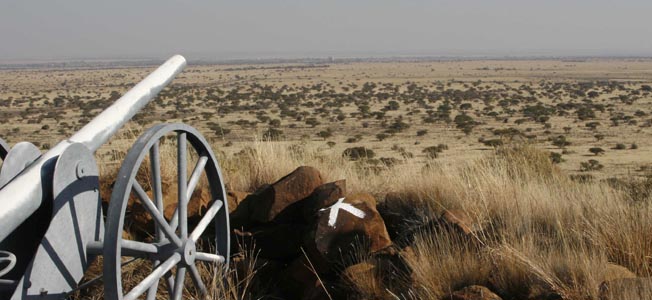
A number of Highlanders remained strewn across the battlefield, and some had been prone on the ground for so long that they had fallen asleep. A few isolated groups had realized it was more dangerous to flee than to stay and fought on in hopes of surviving until they could leave after dusk. The Boers were so impressed with the fighting spirit of one small enclave of Scots that they allowed them to retire unmolested at sunset.
As the remnants of the Scottish brigades staggered to the rear, British artillery covered them by dropping sporadic shells on the foothills. Arriving at Methuen’s headquarters, Colville found his commanding officer dispirited and ready to give up the fight. Colville attempted to persuade the general to resume the attack, but most of Methuen’s staff urged him to fall back and regroup. They were low on ammunition and water, burdened with hundreds of dead and wounded, and the remaining troops were disconsolate and exhausted. What the British forces did not know was that the Boers were almost out of ammunition and would not have been able to sustain another day of constant fighting. Still, it is questionable whether the depleted ranks of Scotsmen could have endured more combat, even had they known of their foes’ bullet shortage.
Who was Responsible for the Disaster at Magersfontein?
The following dawn, the Guards Battalion arrived from its position three miles behind the front and swapped a few desultory shots with the Boers, but around mid-morning the firing fizzled and both sides sent detachments onto the gory, now-silent battlefield to remove the casualties before the hyenas, vultures, and lions arrived. Some 971 British soldiers were dead, wounded, captured, or missing. For the Black Watch, in particular, it was the worst pounding the regiment had absorbed since its 1758 fight with the French at Ticonderoga. The Boers, by comparison, lost about 250 killed or injured, mostly to artillery fire.
With Wauchope dead, a victim in large part to his own battlefield errors, the bulk of the blame landed on Methuen. Although it was Wauchope who made the crucial mistake of keeping the troops too long in tight formation, that fact was not generally known at the time. Many of those who knew of his blunder died with him. Methuen was fingered as the one responsible. “There must be a scapegoat,” the general admitted, “so I must bear my fate, holding my tongue.”
Although Methuen’s handling of the operation had left much to be desired, it was actually the prevailing attitude of Her Majesty’s high command that was most culpable. Few other British commanders would have directed the battle any differently. The crusty paladins of the British military, so enamored of tradition, had not yet grasped the murderous implications of the new era. For the first time since the Napoleonic Wars, Great Britain faced an enemy that was her equal in tactics and armaments. No longer were the legions of the Empire fighting Indian or African aboriginals wielding clubs, bows, knives, spears, and the occasional musket. This time, they were facing a well-armed militia of determined free men whose expertise with the Mauser rifle, honed by long years on the African veldt, was as unmerciless as it was uncanny.
Among the surviving Highlanders, bitterness raged against their commanding general. “Everyone here is furious with Methuen for his bad generalship,” Lieutenant Bertram Lang wrote home. Another member of the Black Watch spoke for all the Scottish regiments at Magersfontein when he declared flatly that his unit had been “led into a butcher’s shop and bloody well left there.”
The Consequences of “Black Week”
Following similarly shocking defeats at Stormberg Junction and Colenso that same week—“Black Week,” as it was known back in England—Methuen and Buller were sacked and replaced by a grimly determined new command led by Field Marshal Lord Frederick Sleight Roberts and Lord Horatio Herbert Kitchener. The day of plaid-kilted Highlanders marching erectly toward the enemy was ended. At a private burial service for the much-mourned “Red Mick” Wauchope, a solitary piper played “Lochaber No More.” It was as much a prediction as a dirge.
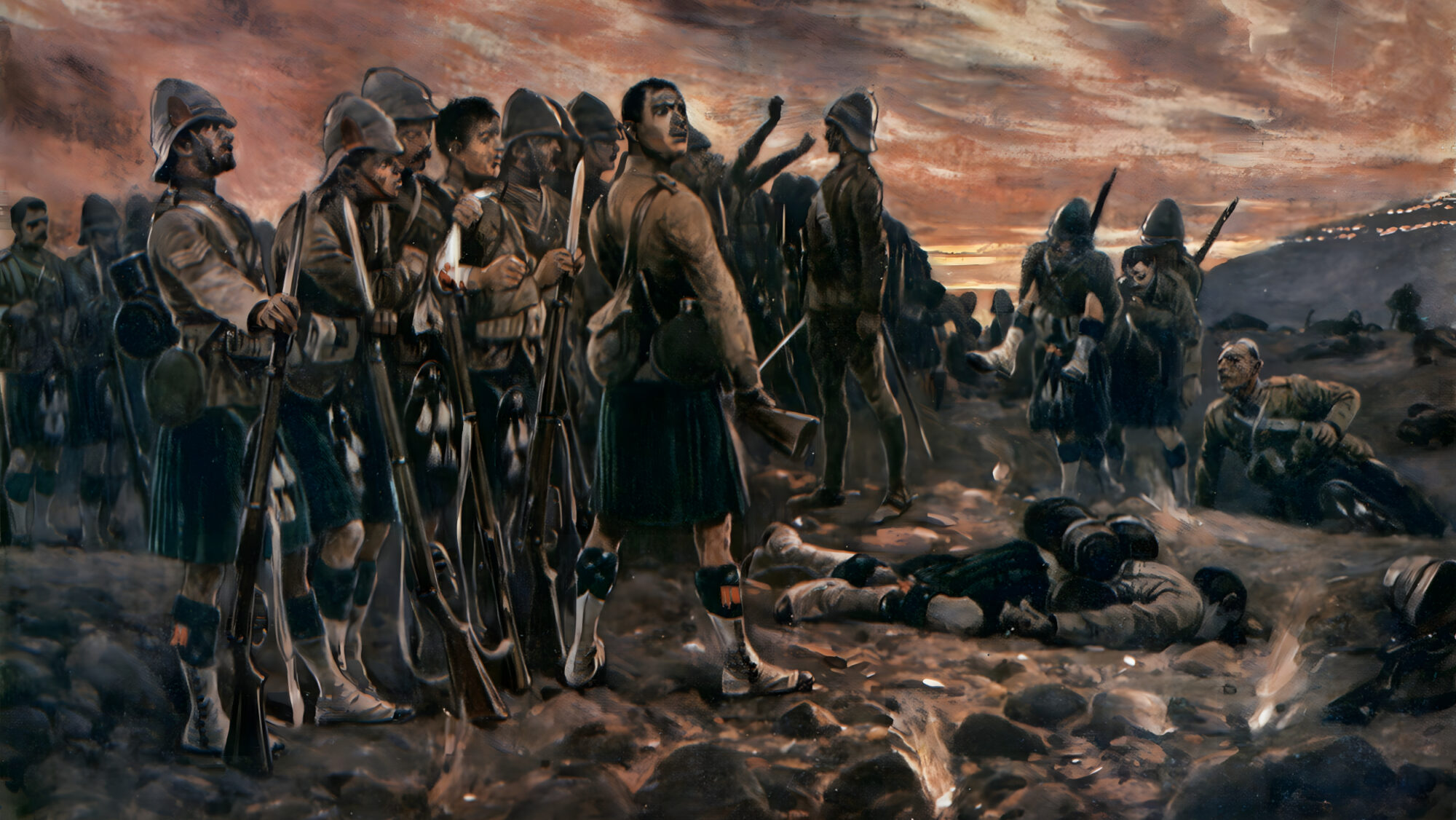
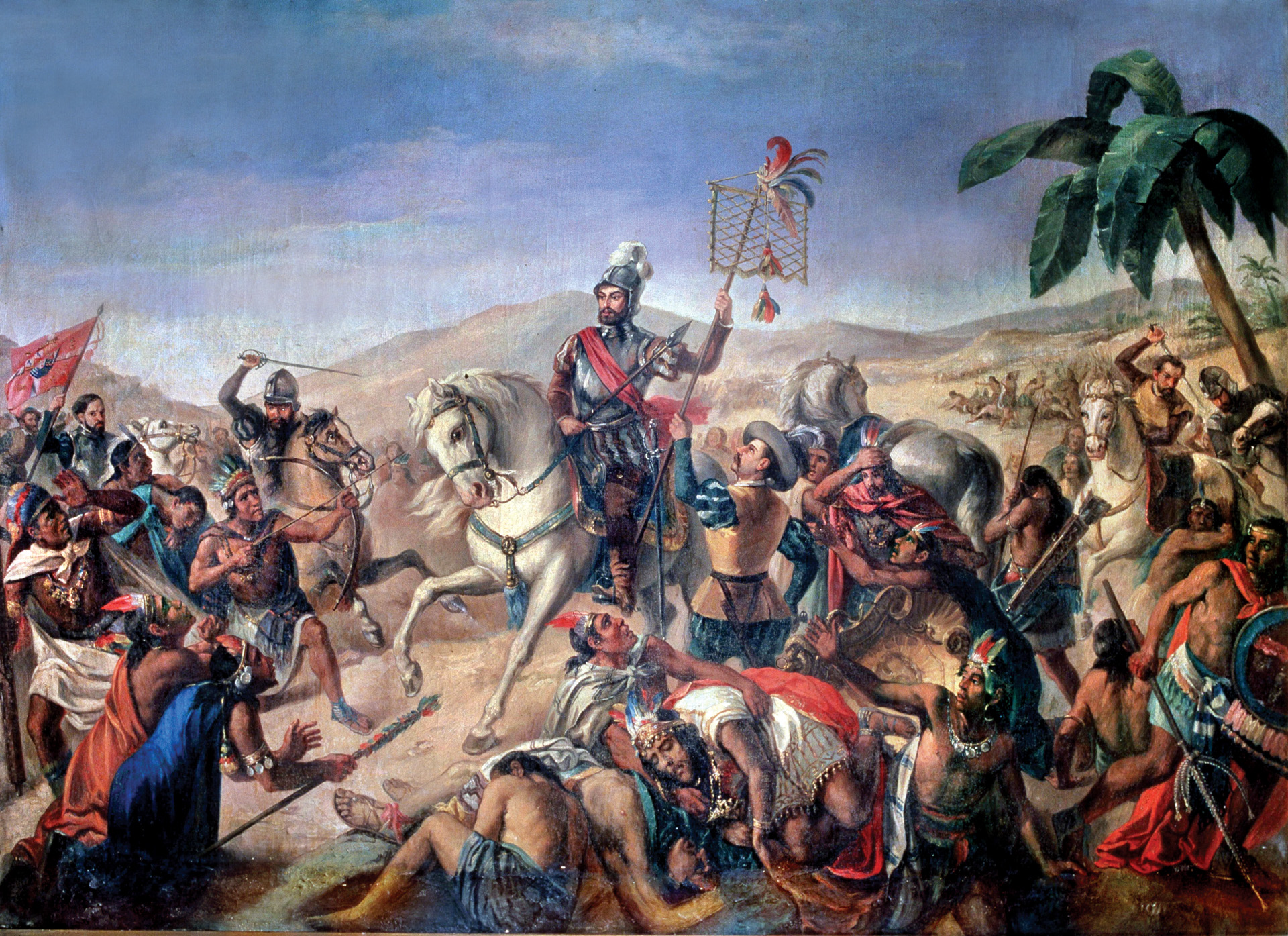
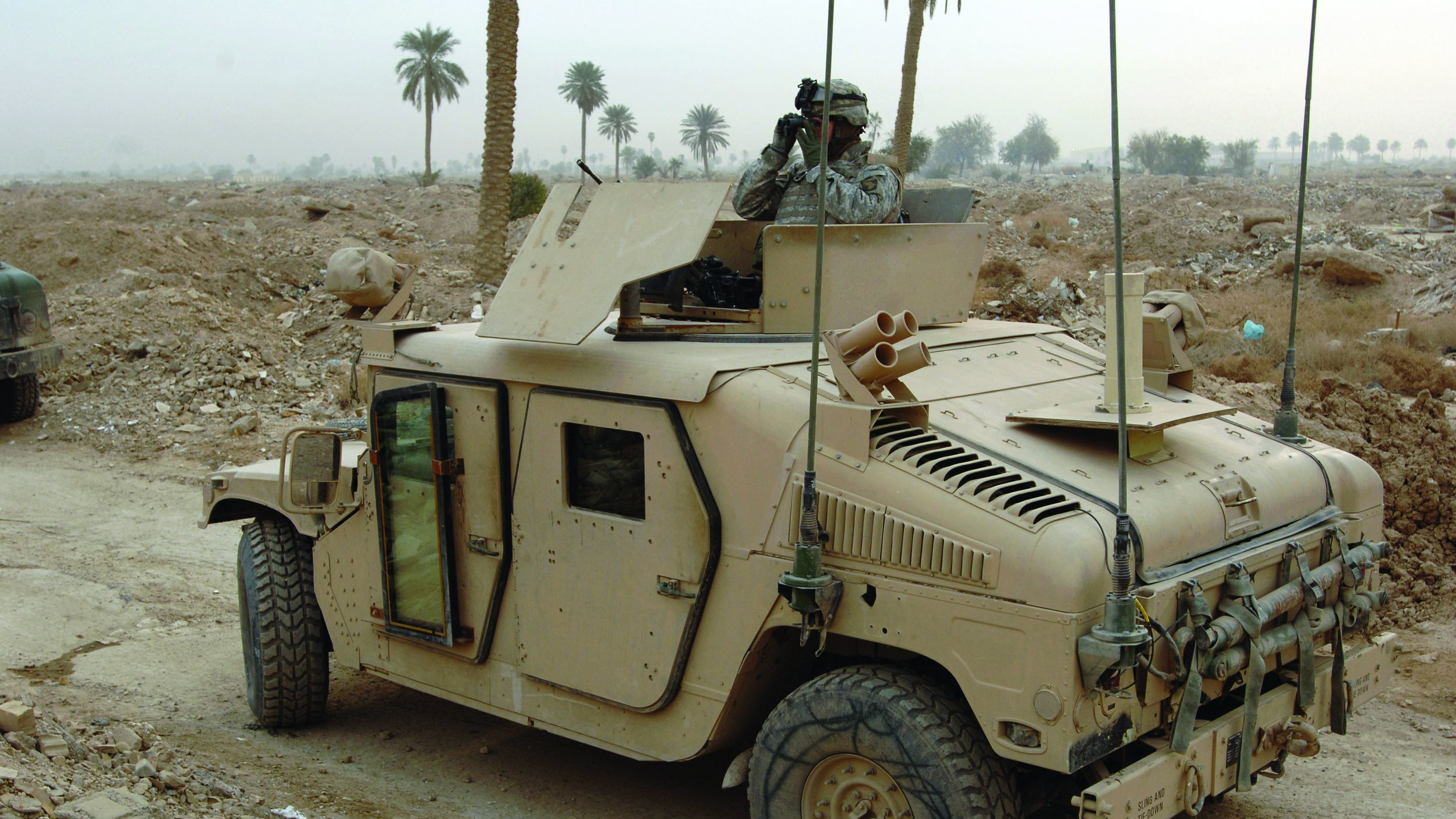
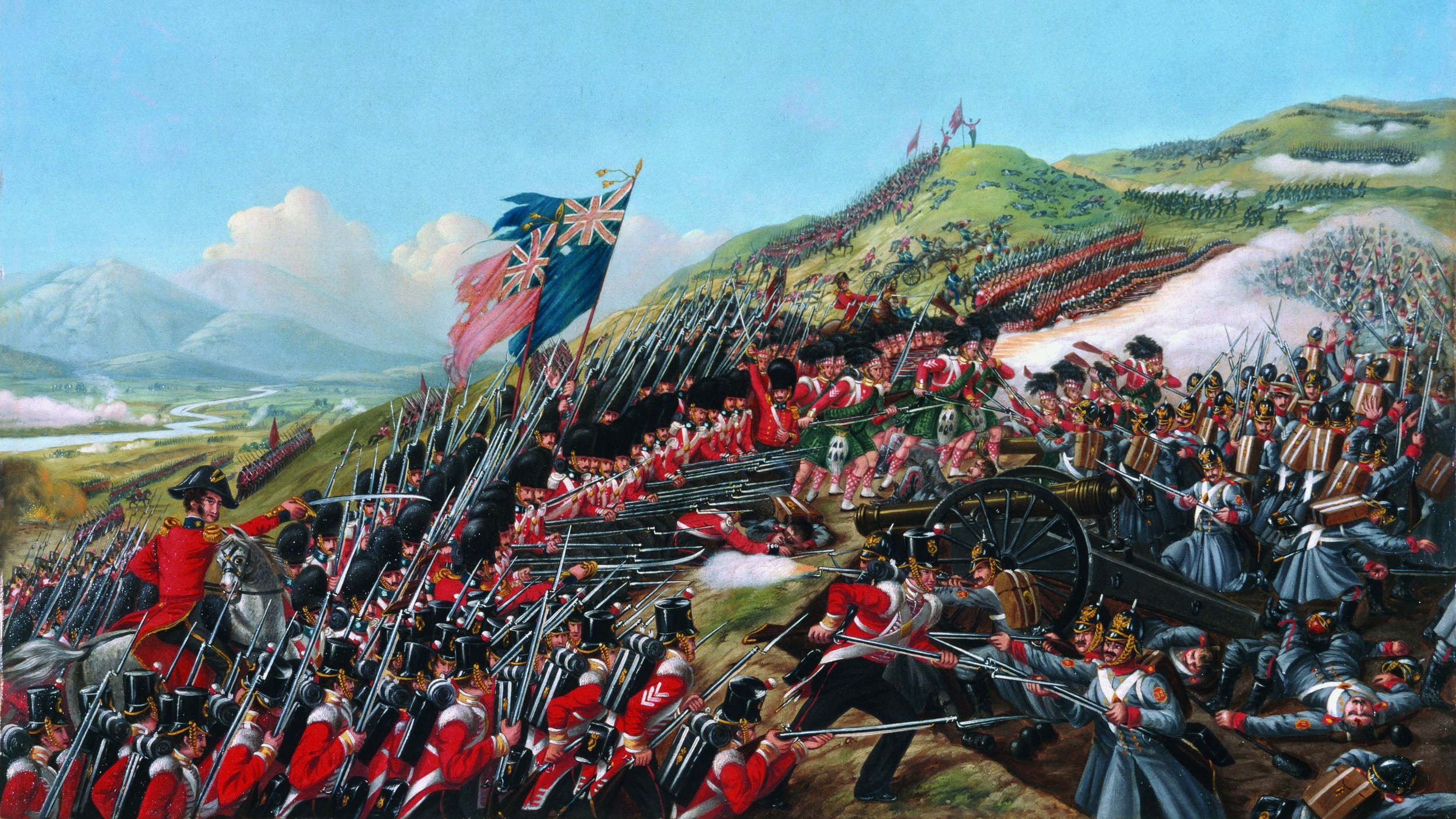
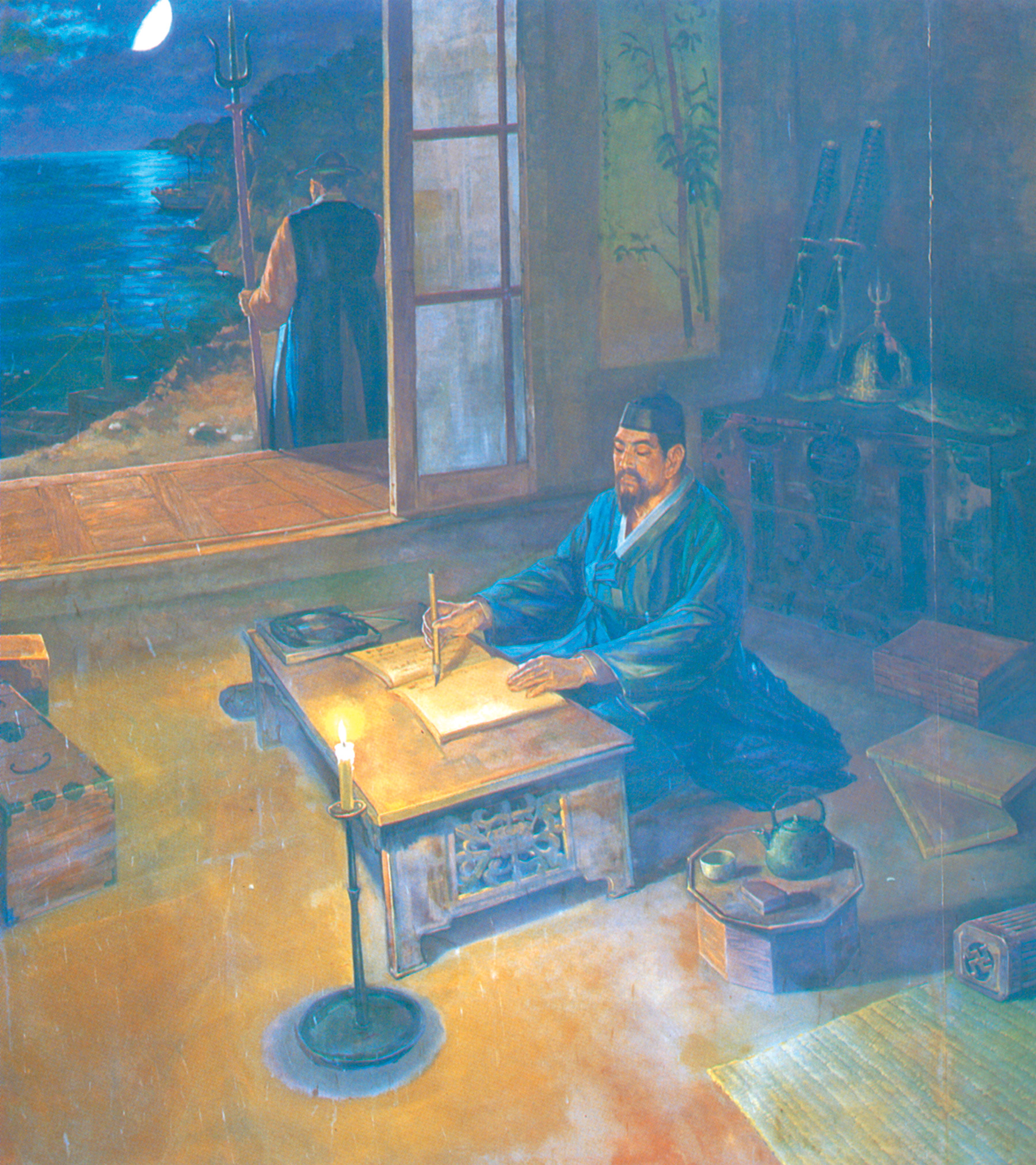
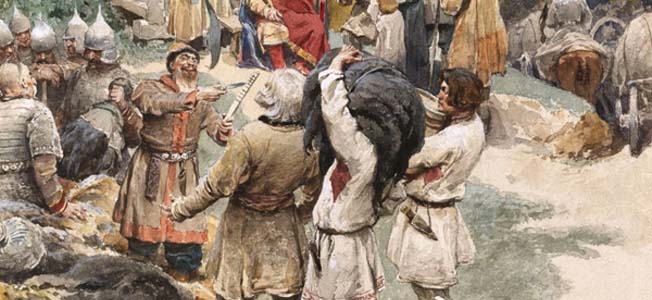
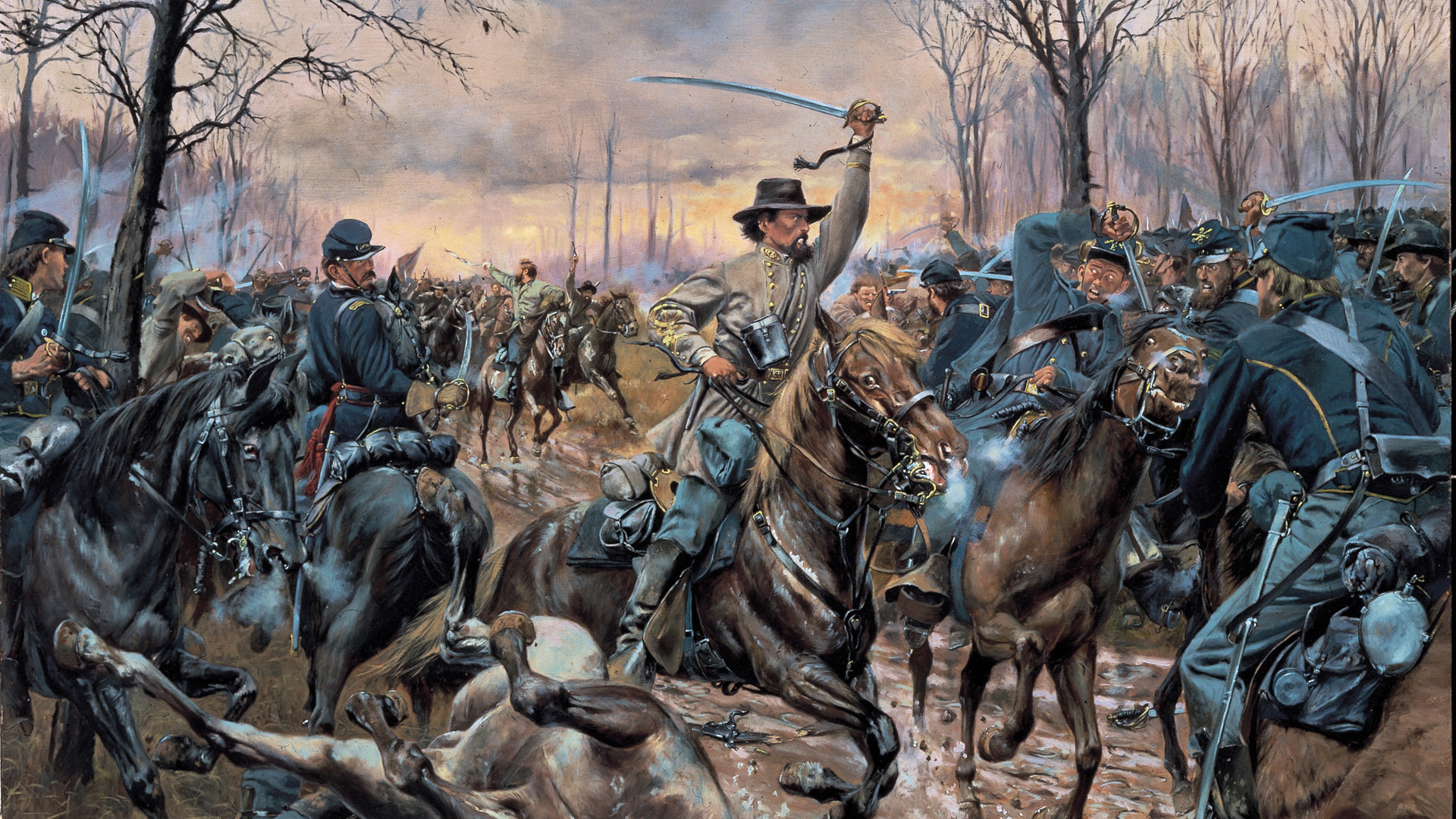
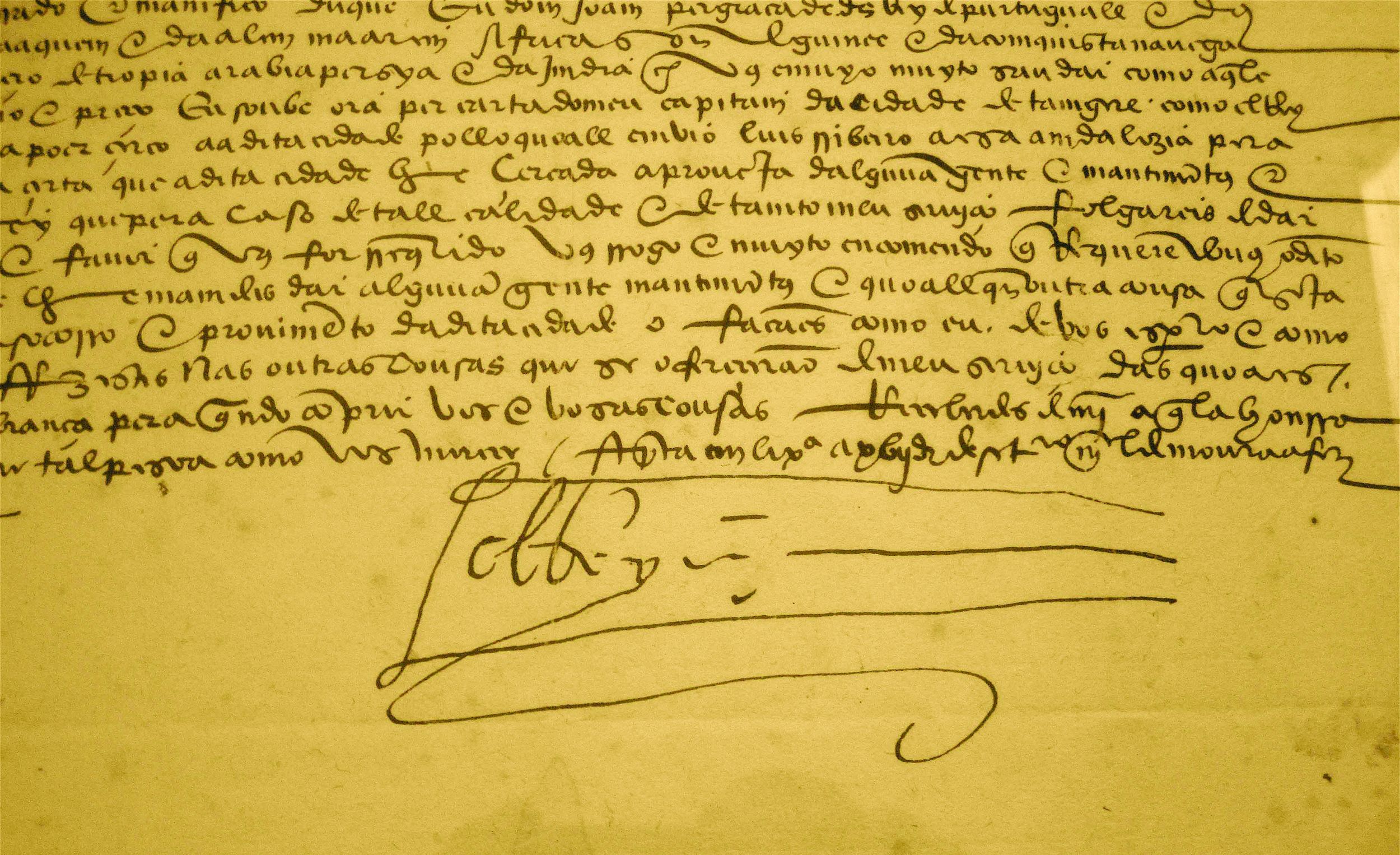
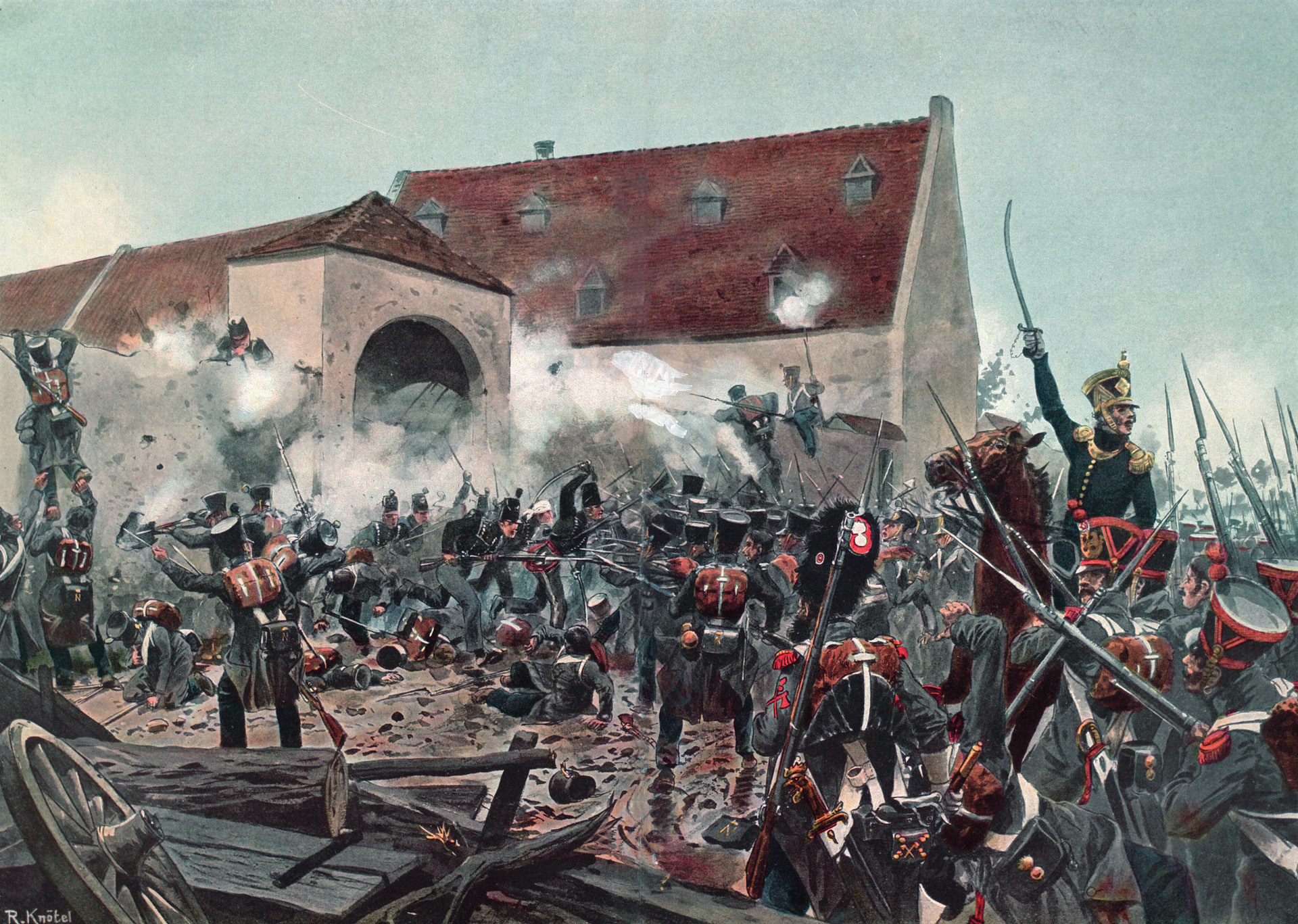
AN EXCELLENT SUMMARY.
THE ONLY OMISSION WAS THE SOMEWHAT RUDE COMMENT MADE BY A GUARDS OFFICER ABOUT THE PROPENSITY OF THE HIGHLANDERS TO “ CHARGE LIKE HELL IN BOTH DIRECTIONS “!